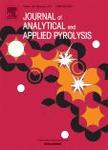版权所有:内蒙古大学图书馆 技术提供:维普资讯• 智图
内蒙古自治区呼和浩特市赛罕区大学西街235号 邮编: 010021

作者机构:Univ Alberta Dept Renewable Resources Edmonton AB T6G 2E3 Canada Univ Alberta Land Reclamat Int Grad Sch Edmonton AB T6G 2E3 Canada
出 版 物:《JOURNAL OF ANALYTICAL AND APPLIED PYROLYSIS》 (分析与应用高温分解杂志)
年 卷 期:2021年第156卷
页 面:105174-105174页
核心收录:
学科分类:0820[工学-石油与天然气工程] 081704[工学-应用化学] 07[理学] 0817[工学-化学工程与技术] 070304[理学-物理化学(含∶化学物理)] 08[工学] 0703[理学-化学]
基 金:University of Alberta's Future Energy Systems research initiative Canada First Research Excellence Fund [CFREF-2015-00001]
主 题:Energy dispersive X-ray spectroscopy Generalized additive model K-fold cross-validation Linear regression X-ray photoelectron spectroscopy Ultimate analysis
摘 要:Ultimate analysis, energy dispersive X-ray spectroscopy (EDX), and X-ray photoelectron spectroscopy (XPS) are widely used methods for the determination of elemental composition of biomaterials such as biochar. However, models that describe the relationship in elemental composition between ultimate and spectroscopic methods are lacking. Elemental composition of biochars determined using ultimate analysis, EDX, and XPS methods was used to develop relationships among these methods using linear regression and generalized additive modelling. The relationships were evaluated using min/max accuracy and cross-validation. Based on Akaike information criterion and generalized cross-validation scores, the generalized additive model with a thin plate spline (TPS) best described the relationships. Model performance significantly improved by adding a feedstock-dependent grouping variable. Elemental carbon concentration determined by the different methods was significantly related (R2 = 0.82-0.88) by the TPS. Although not detected by EDX, nitrogen concentration was significantly related by TPS (R2 = 0.77) between the ultimate and XPS methods. For oxygen concentration, a strongly significant relationship (R2 = 0.83-0.86) was found between the ultimate and both spectroscopic methods, but a weak one (R2 0.54) between the XPS and EDX methods. Min/max accuracy, reaching 80 % and above during testing, confirmed that the best-fit models would predict carbon, nitrogen and oxygen concentrations with small variations for several biochars. We conclude that the elemental composition of biochars is affected by the method used for its determination and the generalized additive models developed can be used to calibrate the elemental composition analyzed using different methods.